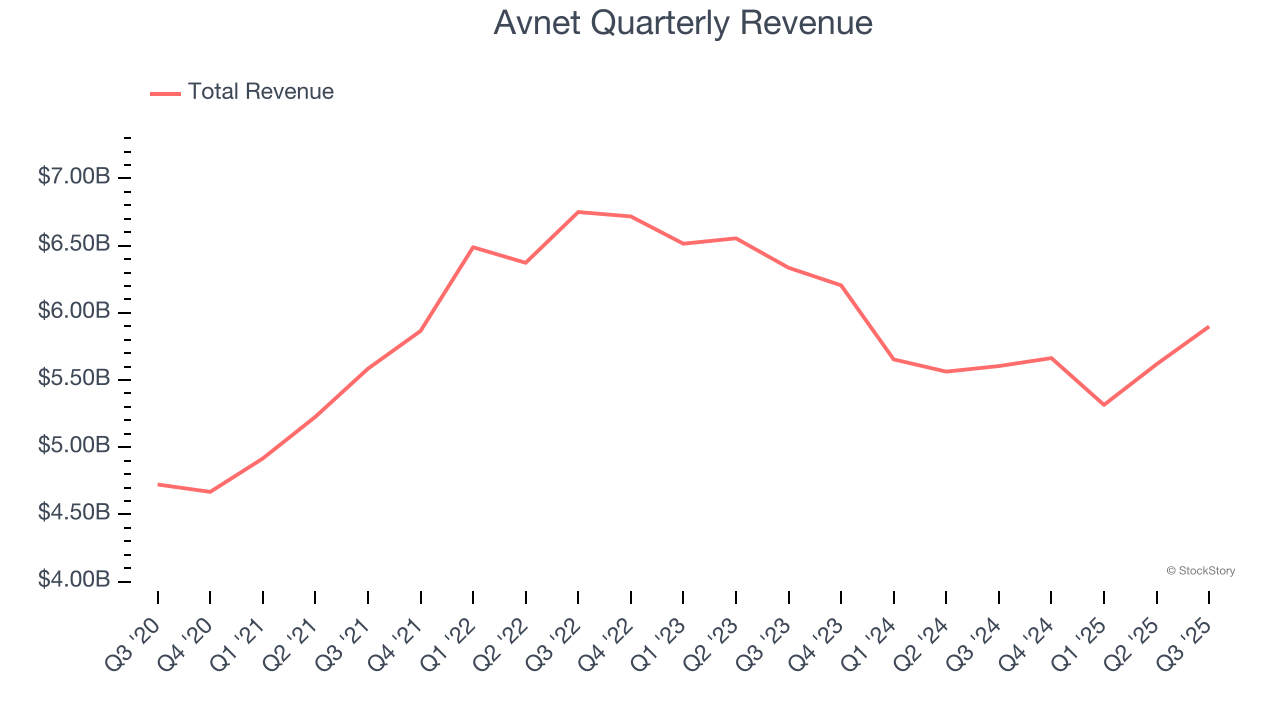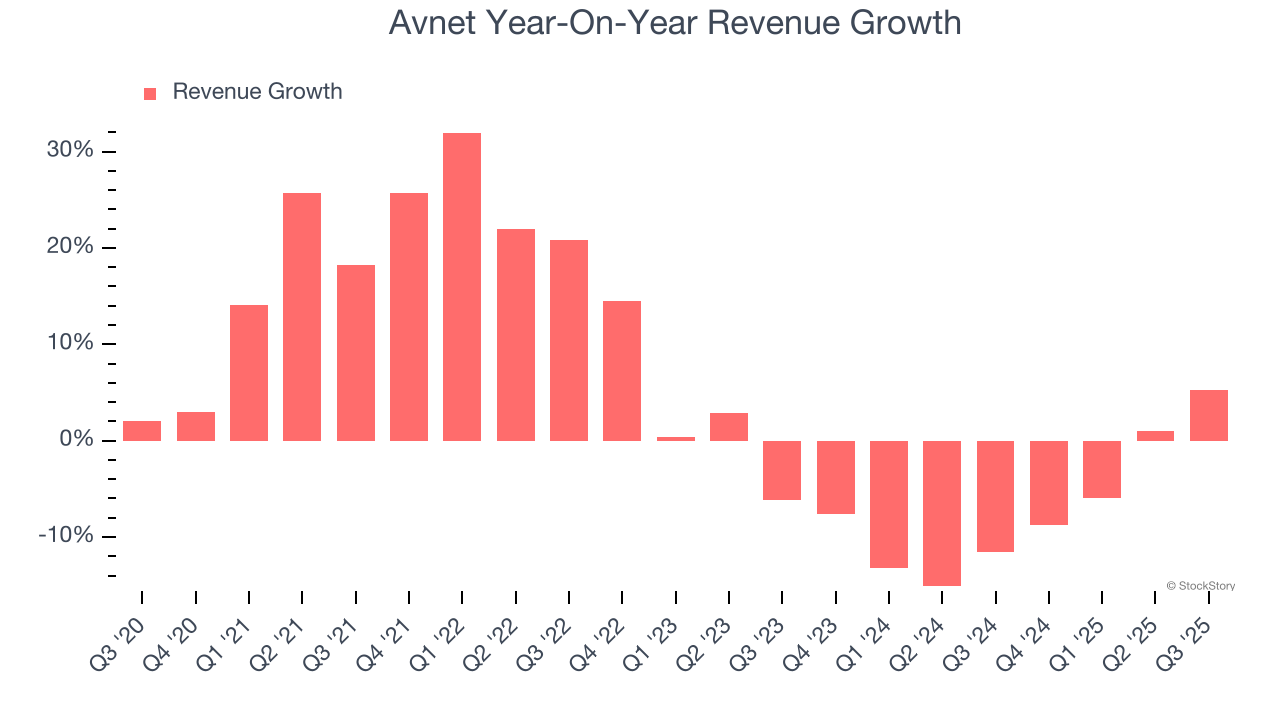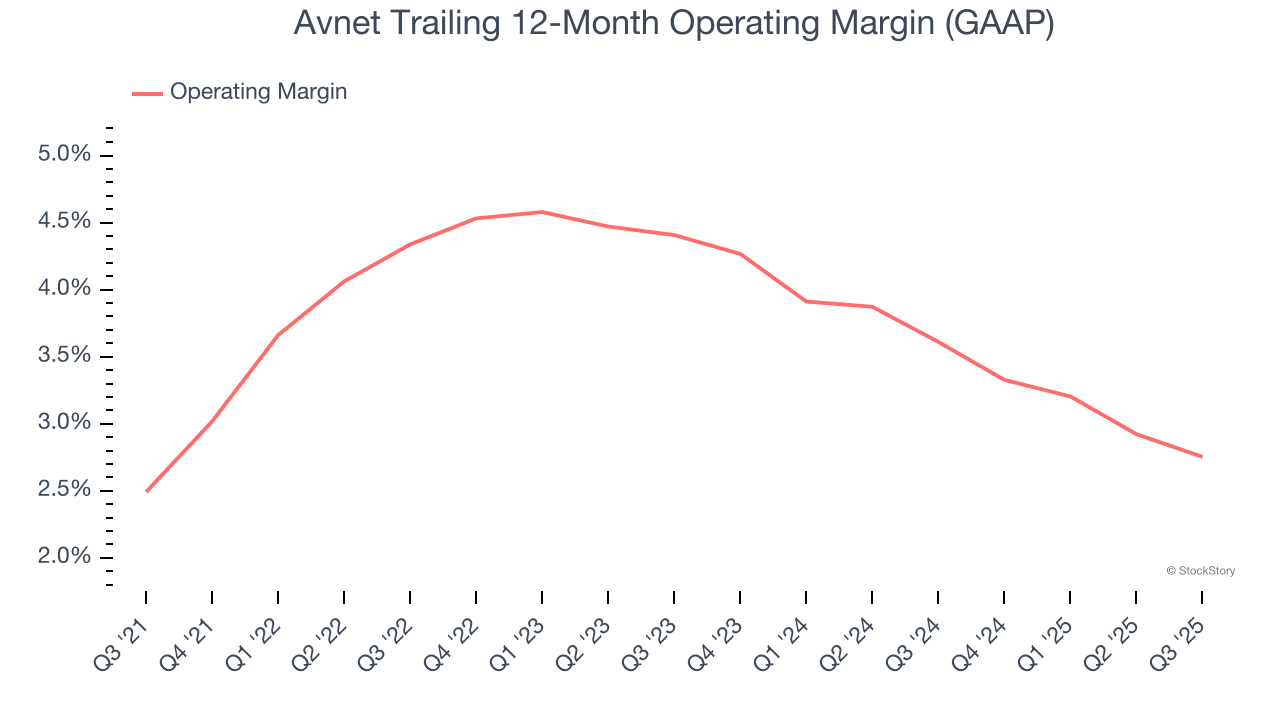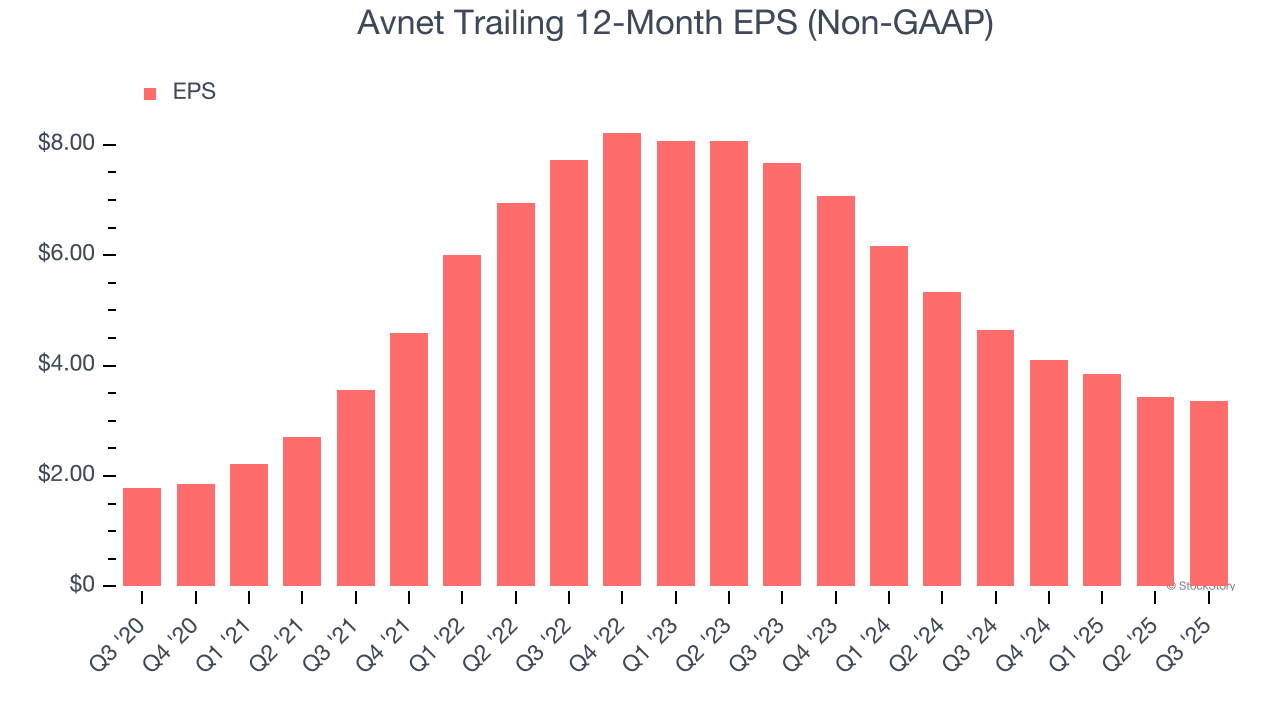
Electronic components distributor Avnet (NASDAQGS:AVT) beat Wall Street’s revenue expectations in Q3 CY2025, with sales up 5.3% year on year to $5.90 billion. Guidance for next quarter’s revenue was optimistic at $6 billion at the midpoint, 2.5% above analysts’ estimates. Its non-GAAP profit of $0.84 per share was 4% above analysts’ consensus estimates.
Is now the time to buy Avnet? Find out by accessing our full research report, it’s free for active Edge members.
Avnet (AVT) Q3 CY2025 Highlights:
- Revenue: $5.90 billion vs analyst estimates of $5.73 billion (5.3% year-on-year growth, 3% beat)
- Adjusted EPS: $0.84 vs analyst estimates of $0.81 (4% beat)
- Adjusted EBITDA: $168.6 million vs analyst estimates of $171.6 million (2.9% margin, 1.8% miss)
- Revenue Guidance for Q4 CY2025 is $6 billion at the midpoint, above analyst estimates of $5.85 billion
- Adjusted EPS guidance for Q4 CY2025 is $0.95 at the midpoint, below analyst estimates of $1.02
- Operating Margin: 2.4%, in line with the same quarter last year
- Free Cash Flow was -$169.2 million, down from $74.55 million in the same quarter last year
- Market Capitalization: $4.11 billion
“In the first quarter, our sales and earnings exceeded our expectations, led by double-digit year-over-year sales growth in Farnell and Asia,” said Avnet Chief Executive Officer Phil Gallagher.
Company Overview
With a century-long history of adapting to technological evolution, Avnet (NASDAQ: AVT) is a global electronic components distributor that connects manufacturers of semiconductors and other electronic parts with businesses that need these components.
Revenue Growth
Examining a company’s long-term performance can provide clues about its quality. Any business can experience short-term success, but top-performing ones enjoy sustained growth for years.
With $22.5 billion in revenue over the past 12 months, Avnet is a behemoth in the business services sector and benefits from economies of scale, giving it an edge in distribution. This also enables it to gain more leverage on its fixed costs than smaller competitors and the flexibility to offer lower prices. However, its scale is a double-edged sword because it’s challenging to maintain high growth rates when you’ve already captured a large portion of the addressable market. To expand meaningfully, Avnet likely needs to tweak its prices, innovate with new offerings, or enter new markets.
As you can see below, Avnet grew its sales at a mediocre 4.9% compounded annual growth rate over the last five years. This shows it couldn’t generate demand in any major way and is a tough starting point for our analysis.

Long-term growth is the most important, but within business services, a half-decade historical view may miss new innovations or demand cycles. Avnet’s performance shows it grew in the past but relinquished its gains over the last two years, as its revenue fell by 7.2% annually. 
This quarter, Avnet reported year-on-year revenue growth of 5.3%, and its $5.90 billion of revenue exceeded Wall Street’s estimates by 3%. Company management is currently guiding for a 5.9% year-on-year increase in sales next quarter.
Looking further ahead, sell-side analysts expect revenue to grow 4.7% over the next 12 months. Although this projection implies its newer products and services will catalyze better top-line performance, it is still below the sector average.
Software is eating the world and there is virtually no industry left that has been untouched by it. That drives increasing demand for tools helping software developers do their jobs, whether it be monitoring critical cloud infrastructure, integrating audio and video functionality, or ensuring smooth content streaming. Click here to access a free report on our 3 favorite stocks to play this generational megatrend.
Operating Margin
Avnet’s operating margin might fluctuated slightly over the last 12 months but has remained more or less the same, averaging 3.6% over the last five years. This profitability was lousy for a business services business and caused by its suboptimal cost structure.
Looking at the trend in its profitability, Avnet’s operating margin might fluctuated slightly but has generally stayed the same over the last five years. This raises questions about the company’s expense base because its revenue growth should have given it leverage on its fixed costs, resulting in better economies of scale and profitability.

This quarter, Avnet generated an operating margin profit margin of 2.4%, in line with the same quarter last year. This indicates the company’s overall cost structure has been relatively stable.
Earnings Per Share
Revenue trends explain a company’s historical growth, but the long-term change in earnings per share (EPS) points to the profitability of that growth – for example, a company could inflate its sales through excessive spending on advertising and promotions.
Avnet’s EPS grew at a spectacular 13.5% compounded annual growth rate over the last five years, higher than its 4.9% annualized revenue growth. This tells us the company became more profitable on a per-share basis as it expanded.

Like with revenue, we analyze EPS over a more recent period because it can provide insight into an emerging theme or development for the business.
For Avnet, its two-year annual EPS declines of 33.8% mark a reversal from its (seemingly) healthy five-year trend. We hope Avnet can return to earnings growth in the future.
In Q3, Avnet reported adjusted EPS of $0.84, down from $0.92 in the same quarter last year. Despite falling year on year, this print beat analysts’ estimates by 4%. Over the next 12 months, Wall Street expects Avnet’s full-year EPS of $3.36 to grow 55.8%.
Key Takeaways from Avnet’s Q3 Results
We were impressed by Avnet’s optimistic revenue guidance for next quarter, which blew past analysts’ expectations. We were also glad its revenue outperformed Wall Street’s estimates. On the other hand, its EPS guidance for next quarter missed. Overall, this print had some key positives. The market seemed to be hoping for more, and the stock traded down 3.9% to $48.61 immediately following the results.
So do we think Avnet is an attractive buy at the current price? The latest quarter does matter, but not nearly as much as longer-term fundamentals and valuation, when deciding if the stock is a buy. We cover that in our actionable full research report which you can read here, it’s free for active Edge members.






